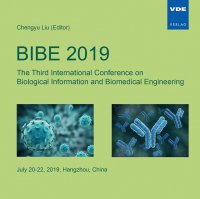Analysis on the law of Chinese medicine in the treatment of food allergy
Konferenz: BIBE 2019 - The Third International Conference on Biological Information and Biomedical Engineering
20.06.2019 - 22.06.2019 in Hangzhou, China
Tagungsband: BIBE 2019
Seiten: 4Sprache: EnglischTyp: PDF
Persönliche VDE-Mitglieder erhalten auf diesen Artikel 10% Rabatt
Autoren:
Wu, Rui; Miao, Mingshan; Li, Xiumin (Henan University of Chinese Medicine, Zhengzhou, China)
Inhalt:
OBJECTIVE: To explore the regularity of Chinese medicine in treating food allergy. METHODS: With Chinese herbal medicine and food allergy as the subject words, we searched the related periodical literature of China HowNet database and Wanfang database (January 2008 to August 2018), collected the prescriptions recorded in the literature, established the database, and used Excel software for statistical analysis. RESULTS: Among the 31 journal literatures that met the criteria, 21 kinds of high frequency drugs with frequency greater than or equal to 3 were used, and 127 times were used. High-frequency medicines include Angelica sinensis, ephedra, honeysuckle, Cinnamon Twig and dried ginger. The main classifications of medicinal efficacy are heat-clearing drugs, deficiency-tonifying drugs and anti-epidemic drugs. The main medicinal flavor is bitter, sweet and bitter, while the main medicinal properties are cold and warm. The number of Guifei medicines was the largest, followed by the spleen, liver and stomach meridians. CONCLUSION: Data analysis shows that Chinese medicine is mainly used to treat food allergy with heat-clearing drugs and deficiency-tonifying drugs, supplemented by surface-relieving drugs, which can provide basis for clinical prescriptions.


